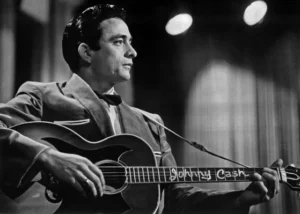New York City’s street vendors are an integral part of the urban tapestry, a living testament to the city’s dynamic hustle and diverse cultural fabric. They provide quick and affordable meals to millions of New Yorkers and tourists, making them an indispensable element of the city’s vibrant street culture. Among these vendors, the hot dog cart is perhaps the most iconic—its presence immortalized in movies, books, and television as a symbol of New York’s fast-paced, entrepreneurial spirit. Despite their ubiquity, the economic realities and operational complexities of running a hot dog cart remain a mystery to many. What does it take to open a cart? How profitable is the venture? And what are the day-to-day challenges vendors face?
Here unpack and drift upon the multifaceted world of New York City’s street vending industry, focusing on hot dog carts. We’ll analyze the costs associated with starting a cart, the licensing and regulatory hurdles vendors must navigate, the financial potential, and the often-overlooked struggles that come with running one. By examining these factors, we’ll gain a clearer picture of whether the dream of vending in the Big Apple is truly as golden as a freshly grilled hot dog.
The Initial Investment: High Costs and Limited Licenses
For those considering entering the world of New York street vending, the first barrier to entry is the significant initial investment. Setting up a hot dog cart requires more than just purchasing a cart and buying ingredients. Prospective vendors must account for a range of costs, including equipment, permits, and space.
The Cart Itself:
A typical hot dog cart with a grill, storage compartments, and a refrigeration unit can cost anywhere from $2,000 to $10,000, depending on the size and quality of the cart. Some vendors opt for used carts, which are more affordable but may require repairs or upgrades. The decision to invest in a high-quality cart versus a more economical option often hinges on the vendor’s budget and long-term vision for the business.
Licensing and Permits:
The most significant expense—and obstacle—for vendors is acquiring the necessary licenses and permits. To legally operate a hot dog cart in New York City, vendors must obtain a mobile food vendor license and a permit for their cart. The license itself costs around $200, but the real challenge lies in securing a permit. The city has a strict cap on the number of permits it issues, leading to a long waiting list that can take years to navigate. As of 2021, the number of permits was capped at 5,100, and the waitlist for a new permit had over 20,000 names.
Because of this scarcity, many vendors resort to the underground market, where a two-year permit, which should cost $200, can be rented for anywhere between $15,000 and $25,000 per year. This exorbitant fee cuts deeply into profits and forces vendors into a precarious financial position, where they must work long hours and sell large volumes just to break even. The scarcity of permits has created a secondary market controlled by intermediaries, making it nearly impossible for new vendors to enter the industry without significant financial backing.
Insurance and Maintenance: Vendors are also required to maintain insurance, which can range from $500 to $1,000 per year, depending on the coverage. Regular maintenance of the cart, especially if it includes refrigeration or heating elements, is essential to ensure compliance with health regulations and minimize the risk of breakdowns during peak hours.
Daily Operations: The Grind Behind the Griddle
Operating a hot dog cart is far from a leisurely affair. Vendors typically work long hours, standing on their feet for up to 12 hours a day, often in extreme weather conditions. The work is physically demanding, requiring constant attention to food preparation, customer service, and cart maintenance.
Product Sourcing and Storage:
Vendors must purchase ingredients, such as hot dogs, buns, condiments, and beverages, on a regular basis. To maximize profit margins, many vendors source their products from wholesalers like Restaurant Depot or local suppliers. Storage space is limited on carts, so vendors often make multiple trips throughout the week to replenish stock. This can be especially challenging for vendors who lack transportation or have to navigate the city’s congested traffic.
Competition and Location:
Location is crucial for a vendor’s success. High-traffic areas like Times Square, Central Park, and Wall Street attract more customers but come with fierce competition and higher permit costs. Vendors must arrive early to secure prime spots, as these are typically claimed on a first-come, first-served basis. Even with a good location, vendors must deal with the ebb and flow of foot traffic throughout the day, adjusting their strategies to meet the demands of different customer demographics at various times.
Pricing and Profit Margins: The average price of a hot dog in New York City ranges from $3 to $5 depending on the location and type of customer. While this may seem like a decent markup given the low cost of ingredients, vendors face significant overhead expenses that eat into their profits. In high-rent districts like Manhattan, some vendors pay as much as $200,000 annually to maintain their prime spots—an expense that forces them to sell hundreds of hot dogs a day just to stay in business.
A Bureaucratic Maze
Beyond the daily operational grind, street vendors must contend with an array of regulatory hurdles and enforcement challenges. The New York City Department of Health and Mental Hygiene sets strict standards for food safety and sanitation, conducting regular inspections to ensure compliance. Vendors must maintain their carts in pristine condition, following protocols for food handling, temperature control, and cleanliness.
Fines for violations can be steep, ranging from $200 to $1,000, depending on the infraction. For small infractions such as minor sanitation issues, vendors can face penalties that significantly impact their profitability. Repeat offenders risk losing their licenses altogether, making compliance a top priority.
In addition to health regulations, vendors must also navigate complex city ordinances that govern where and when they can operate. Certain areas are off-limits, such as bus stops, crosswalks, and building entrances. Moreover, the city imposes restrictions on the number of vendors that can occupy a given area, further complicating the already competitive landscape.
Given the high initial investment, ongoing expenses, and regulatory challenges, is running a hot dog cart in New York City a profitable venture? The answer depends on several factors, including location, hours of operation, and the vendor’s ability to navigate the permit market.
Revenue and Profit Margins:
A successful vendor operating in a high-traffic area can make between $200 and $400 a day, translating to annual revenues of approximately $50,000 to $100,000. However, after accounting for permit fees, rent, ingredients, insurance, and maintenance, net profits may be significantly lower—often less than minimum wage when broken down hourly. Vendors in less prime locations or those who cannot afford inflated permit fees may earn as little as $30,000 annually, struggling to make ends meet.
Long Hours and Seasonality:
Hot dog vending is a year-round job, but sales fluctuate based on the season and weather. Summer months typically see higher sales, as more people are outdoors, while winter can be brutally slow. Vendors must work longer hours during peak seasons to compensate for slower periods, making it a challenging and unpredictable business.
Supplementary Income:
Many vendors diversify their offerings to include additional items like pretzels, drinks, and kebabs, boosting their income. Some even pivot to selling seasonal items, such as roasted chestnuts in winter or ice cream in summer, to adapt to changing consumer demands. These strategies can improve profitability but require additional investment and logistical planning.
The life of a hot dog cart vendor in New York City is a complex interplay of aspiration, grit, and survival. While the allure of entrepreneurship and the potential for profit draw many to the industry, the reality is far from glamorous. Vendors must navigate a maze of permits, regulations, and competition, often working long hours for relatively modest returns. Yet, despite these challenges, hot dog carts remain an enduring symbol of New York City’s indomitable spirit, representing the resilience and tenacity of those who strive to carve out their own path.
For some, the hot dog cart is a stepping stone to greater financial security or business growth. For others, it’s a lifelong endeavor, passed down through generations as a family legacy. Regardless of the motivation, each vendor adds a unique flavor to the city’s street scene, contributing to the rich tapestry that makes New York City truly one of a kind.
No comments yet.







